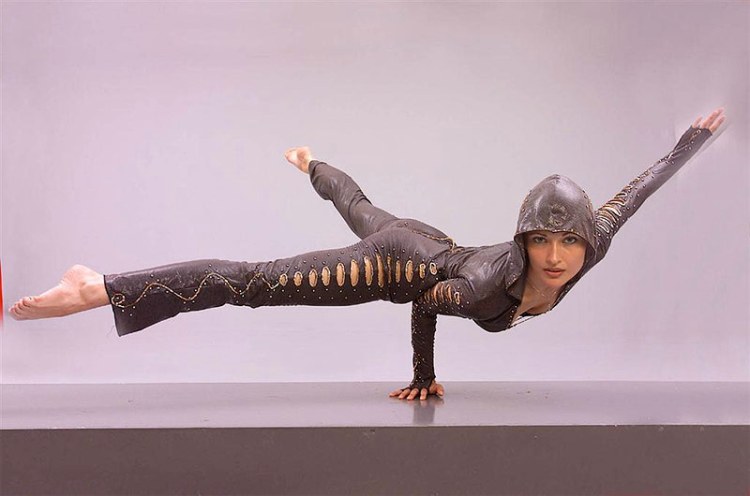After announcing a career switch from actress to game developer, friends and colleagues asked a very natural question: “Why?” My response surprised them. They didn’t expect to hear that I was inspired to create a game because I grew up in the circus. Nor did they expect to hear that I apply lessons learned from performing in the circus to making games — and much more than I ever applied these lessons to acting.
Performing in the circus has taught me to be bold and take risks within my limits, to know my audience, to be tenacious and follow my passions. Beneath the colorful lights and whimsical costumes, the circus is a business like any other, and growing up in that environment has given me a keen understanding of the business of entertainment, which is critical when you’re starting a new gaming studio.
Just because you can do something doesn’t mean you should
Surrounded by sword-swallowers, strongmen, and various daredevils, there were times I was tempted to expand my acrobatic routine with crazy stunts. I quickly learned that just because I could potentially light myself on fire while riding a horse doesn’t mean it was necessarily a good idea. We each have strengths, and it makes sense to prioritize based on those strengths. Sure, you want to do everything possible to make your game great. But that doesn’t mean you should embellish it with every bell and whistle that comes to mind. Often, simplicity is key.
Perform for your audience
The most important part of creating a successful entertainment experience, whether it’s a circus performance or a mobile game, is understanding what your audience finds fun and compelling. Design the game with your audience in mind — not your reviewers or your critics — and resist the temptation to make it all about what you want. As with any creative endeavor, game development requires balancing self-expression with making something that will resonate with your audience. Try to find this balance. Gaming is a medium for connecting with people and bringing them joy. Your finished game should reflect that.
Sometimes you have to jump through some hoops
Growing up in the circus sounds like a dream come true — and it was! — but it was also a lot of hard and sometimes tedious work. I would perform the same routine over and over, until it was perfect. Nothing worth doing comes easily, and game development is no exception. Getting your game from start to finish requires many, many steps that make the process feel never-ending at times. Keep going. You’ll also have to take risks if you want your game to be any good. Set aggressive goals and work diligently to achieve them. Sometimes you’ll have to take a leap of faith.
Trust the ensemble
It’s a challenge collaborating with other highly creative people because often team members’ visions are in conflict with your own. Even if you hire selectively, there will inevitably be some creative differences. I’ve found this to be true whether those differences are over the choreography of an acrobatic routine or the design of a gameplay element. Accept that these differences will arise; express your vision clearly, early, and often. Communicate openly and respectfully. Balance your faith in your own ideas with the trust that your team members also have great intentions for the end result and opinions that are just as valid as your own.
The work that you do as a team will be far greater than anything you could achieve on your own. Keep this in mind as you collaborate, especially when you’re not seeing eye-to-eye.
Imagine opening night
The problem with anything in development is that it remains ugly and unpolished for much of the process, even after you’ve pumped in hours upon hours of tireless work. When I started performing in the circus, I would struggle through clumsy rehearsals, often feeling discouraged. That’s how I feel when working on a game, frustrated by the placeholder graphics, raw gameplay mechanics, temporary sound effects, and fluctuating controls — not to mention the bugs. The best way to maintain your sanity throughout development is to look forward to the finished product. Your game may be far from perfect as is — and it might not ever be perfect — but visualizing the end result will help you to persevere and achieve something that does justice to your vision.
Picture them in their underwear
It can be nerve-wracking to show people your work, especially when they’re people you care about. Your game is your baby, and you have a lot invested in it; of course you want the validation of those whose opinions you trust. I was always nervous when friends would watch me perform a new routine but never quite as nervous as when I asked them to test my game. Try not to take feedback personally, and keep in mind that you’ve pulled off something spectacular just by making a testable game at all. If it were easy, everyone would be a game developer. And if all else fails, just picture your playtesters in their underwear. It always works for me.
 Irina Vaganova (that’s her above, too) is the founder and creative director of a soon-to-be-announced gaming studio based in Rome, Italy. Irina grew up performing in the Russian circus while fostering a passion for video games, which led her to a career in game development. Follow her via her personal website.
Irina Vaganova (that’s her above, too) is the founder and creative director of a soon-to-be-announced gaming studio based in Rome, Italy. Irina grew up performing in the Russian circus while fostering a passion for video games, which led her to a career in game development. Follow her via her personal website.
VentureBeat's mission is to be a digital town square for technical decision-makers to gain knowledge about transformative enterprise technology and transact. Learn More

